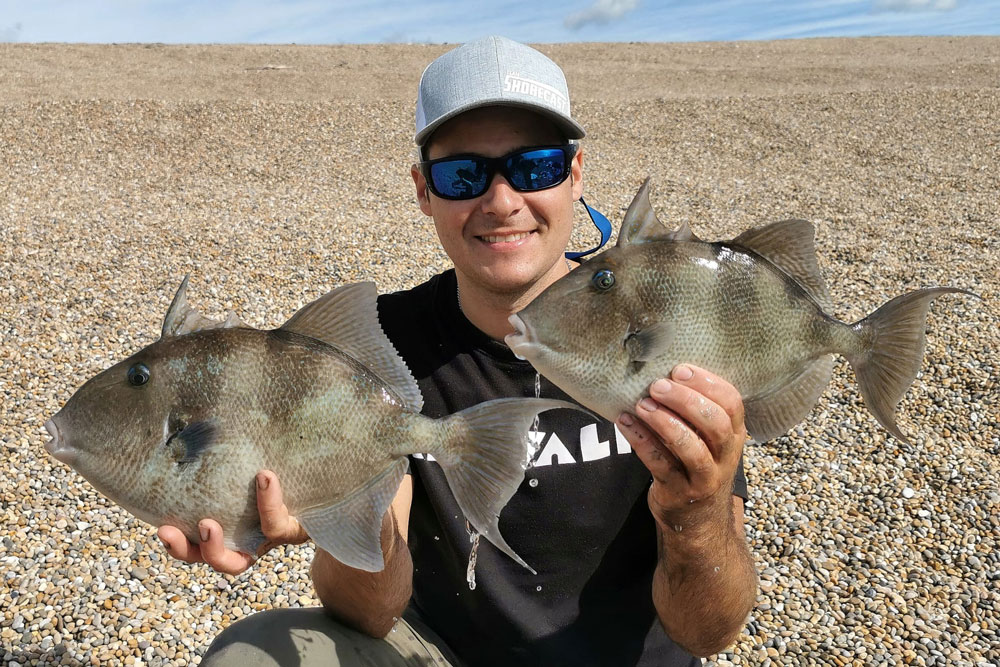They get their name from the front spines on the dorsal fin. These are raised for defence but can be flattened by pressing on the rearward spine much like a gun trigger, hence the name.
They are classed as a visitor only to southern waters, but this is changing due to warming waters, with triggers often washing up in the autumn on Scottish beaches and in the North Sea. They have been found as far north as The Hebrides and Orkney.
In the UK they average between 1 and 3lbs with fish over 4lbs uncommon, though they can easily grow to 10lbs. The British rod caught record is 5lb 14ozs, but this is a record that could be broken very soon as both the numbers and the size of visiting triggers increase in UK waters.
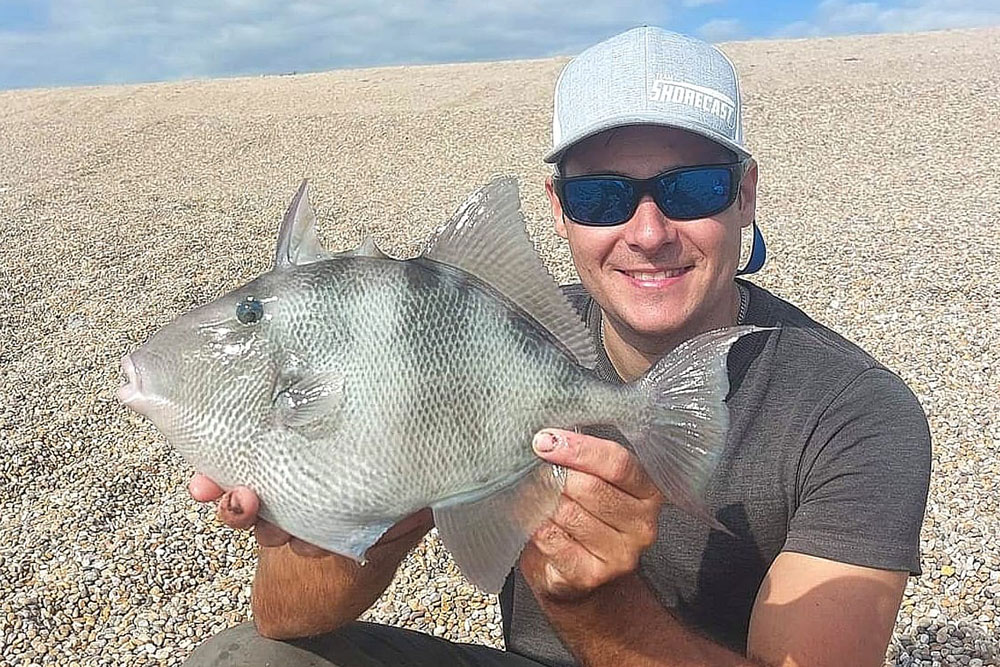
Season
The season is generally short, even in the south, running from early July to early October. The further north you are, say in Wales, then it is more likely to be late July, with peak numbers showing in August and a gradual decline in numbers throughout September. That said, if more anglers targeted this hard fighting fish, then more would be caught later in the year.
Habitat
Triggers have teeth designed to crush shellfish, crabs, and the like. They are found tight in off rock ledges along rocky coasts and especially favour pushbacks or small channels that work back in towards the cliffs with a good depth of water over 7 or 8ft. They can often be seen in these situations swimming around, covering a set route as they search for food. Furthermore, they also like areas where kelp weed beds rise off the seabed.
They take up station around breakwaters, working in and out of the rocks that form the breakwater. Another top spot is piers and jetties, where they will use the support legs as cover and feeding stations. Occasionally, they are caught from beaches when fishing tight to and over rougher ground, though you need to pick beaches with some constant depth as they don’t favour shallow beaches where the tide movement is long. They like structure, so also fish where there might be bits of wreckage, old pipes heading out to sea, and anything else that will provide them with cover and food.
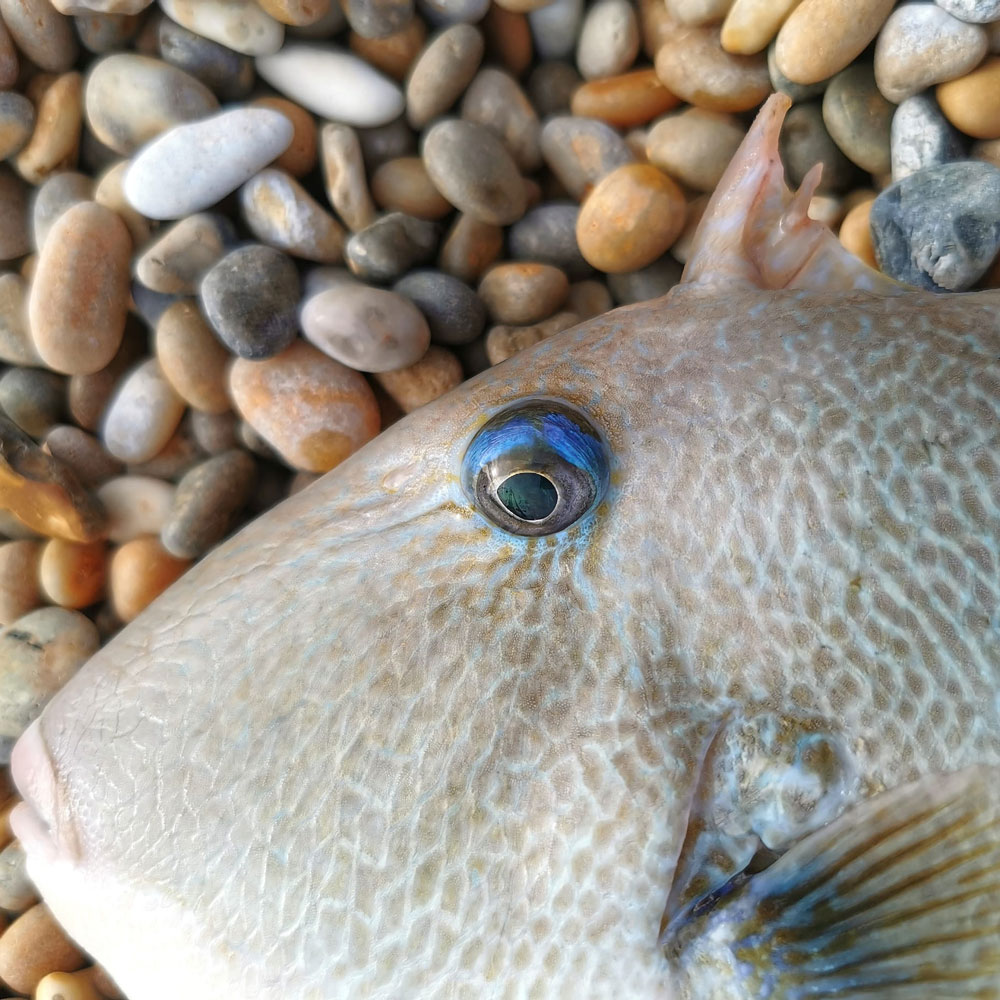
Weather and Tides
Triggers favour settled seas during a period of prolonged high pressure. Once the barometric pressure starts to fall and the seas pick up as a low-pressure system approaches, they will push out to deeper water. They feed happily in clear seas and bright sunshine, but do remember that they will be more concentrated where the water is deeper in these conditions, so look for a general depth over 10ft. If it’s an overcast day, then they can work in shallower water briefly, but you may need to draw them in with groundbait.
Ideally, choose the middle-sized tides rising towards the bigger spring tides and the bigger tides of the cycle. On the rock ledges and deeper beaches, you can pick fish up on smaller tides, but your chances diminish. They are most active during the middle hours of the flooding tide, but can also be taken during the ebb.
Tackle
For rock ledge fishing and ledger work, some power in the rod is needed, so pick a bass rod rated to cast 2-4ozs and around 11’ 6” in length, such as the Banzai Bass Rod. Match this to a 5000 fixed spool reel loaded with 20lb Tronixpro X8 Power Braid and add a short 20lb AXIA Fluorocarbon leader. A simple but effective rig is to tie a Tronixpro 3-Way Swivel to the end of the Fluorocarbon, add a weaker length of 12lb mono line to the lower eye and tie a short 12-inch hook length of 20 to 30lb Fluorocarbon to the middle eye. The hook should be a long shank pattern like a Tronixpro Aberdeen to help combat the triggers teeth, and a size 2 or 1 is plenty big enough.
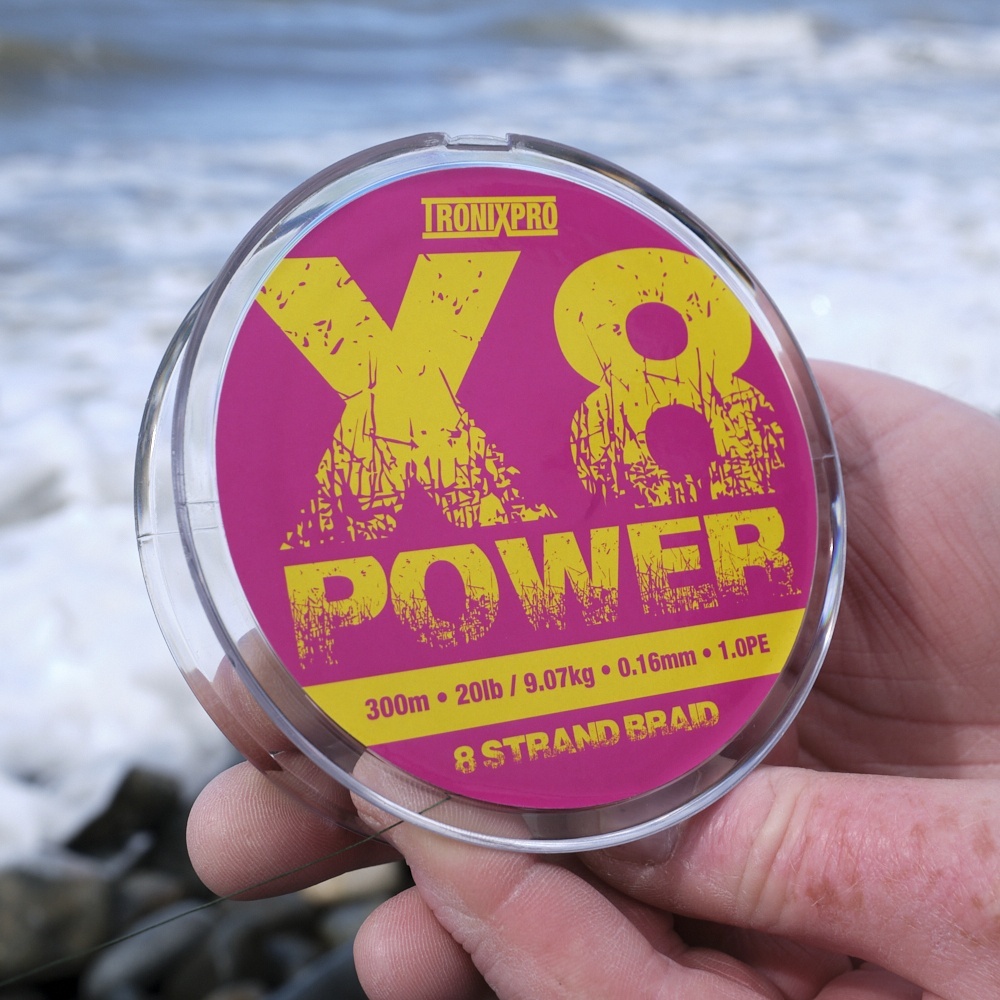
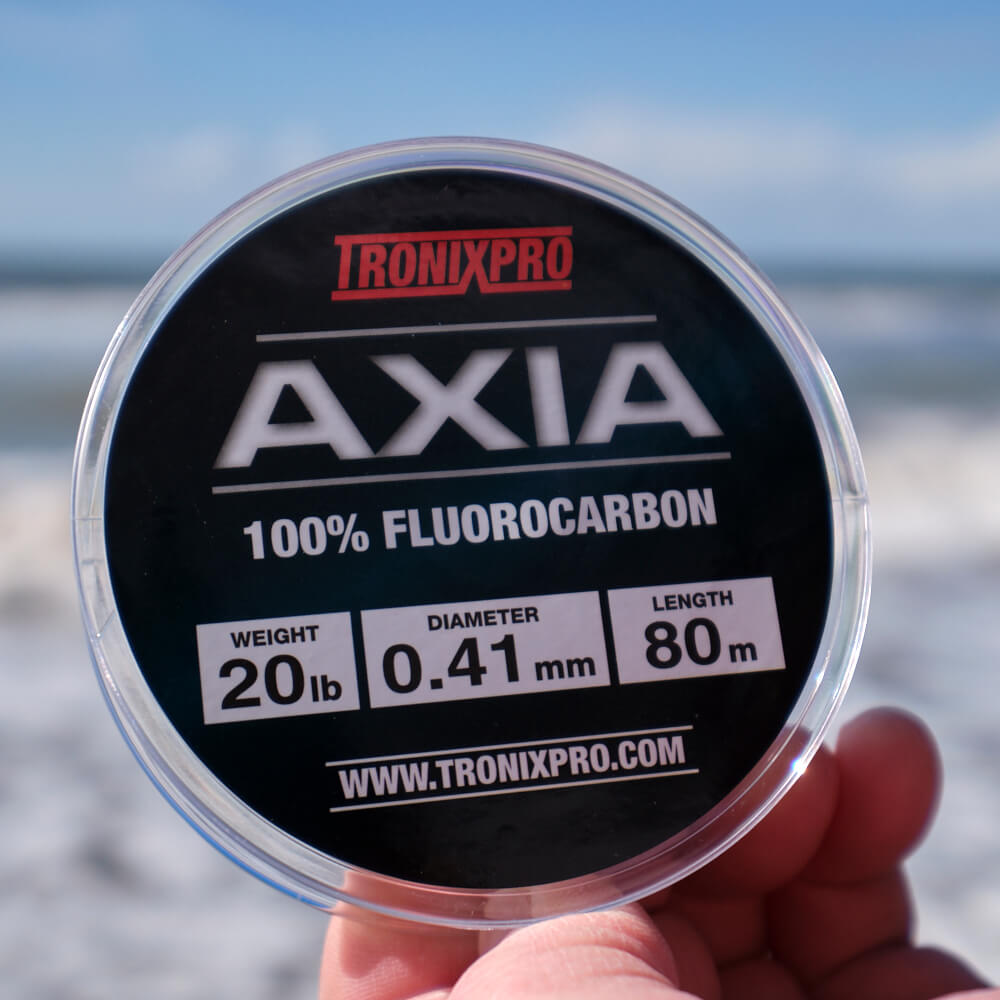
Float fishing is very effective for triggers when fishing off the rocks or around breakwaters and other man-made structures. Rods with a more supple tip are ideal for this with a length around 12ft and rated to cast up to 4ozs, like the Tronixpro Banzai Mullet rod. Again, add the 5000 sized fixed spool with 20lb Tronixpro X8 Power Braid and AXIA Fluorocarbon leader. The most successful float arrangement is to slide onto the Fluorocarbon leader a size 5 mm bead, then a Tronixpro Float capable of supporting a 0.5 to 1oz ball weight, slide on the ball-weight, then another 5 mm bead and tie on a size 4 Tronixpro Rolling Swivel. To the end of the swivel add 18-inches of 20lb Fluorocarbon and a size 2 Tronixpro Aberdeen hook. Above the top bead, using a short length of Tronixpro Rig Gum, tie on a 5-turn Grinner knot over the leader line. This will slide up and down under pressure and allows you to set the depth the bait will fish at.
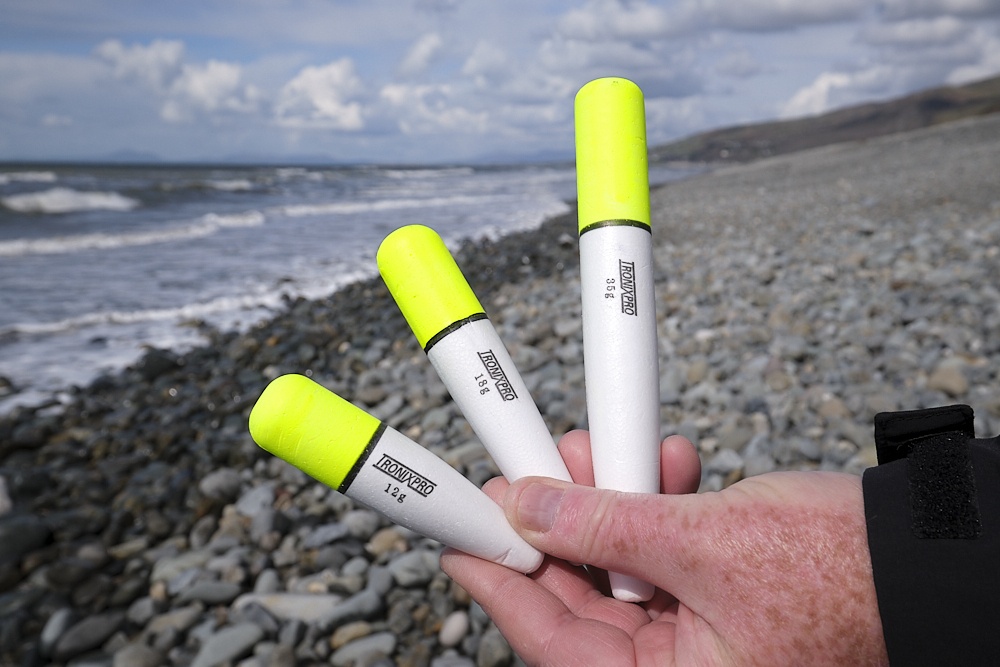
Every so often a 2oz ball-weight will be needed in deeper water, so carry a few different sizes of these to allow you to adjust according to the water depth and tide run. Triggers do not like fast-moving baits, so if you’re not getting bites or missing bites, go to a heavier float and ball-weight.
Baits
Two baits will catch the bulk of the fish. Mackerel strips 1.5 to 2-inches long and about a half-inch wide are perfect. Just nick the hook once through one end of the strip coming in from the flesh side and out through the skin. Occasionally, the triggers can be shy in clear water of a blatant hook. In this case, after the first hook through, slide the bait up and over the hook eye, then pass the point through a second time to hide the hook.
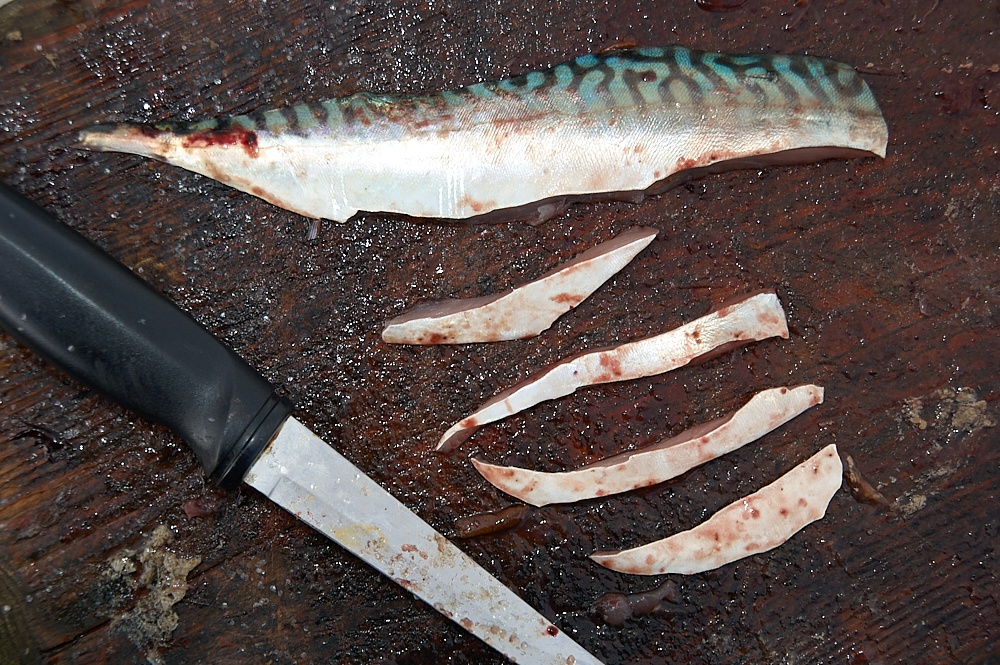
Alternatively, fish small 10p to 50p sized chunks of peeler crab secured with a few wraps of Tronixpro Baitex. Trigger fish will also take hard backed crabs. Pass the hook-up through the belly at the rear and bring it out of the top of the shell. Keep these crab baits small, but if you miss bites, use Baitex to tie the legs on one side of the crab up the shank to hide the hook. Remove the legs on the other side. This forces the trigger to take the bait at the hook end.
Groundbait can be the key to getting trigger fish to come in and feed and to bring them in to your fishing area. This can be a simple mix of bran or bread with hand crushed mackerel mixed into it, maybe with a little pilchard oil to help bind it together. This can be applied either in a mesh bag and hung from a string off piers and jetties. Have the bag half immersed in the water and give it a shake every few minutes to release an explosion of scent. Bits of mackerel will float off deeper, and it’s this that will bring the fish in. On rock ledges and breakwaters, mix the groundbait in a bucket and throw it in tight to the rocks or ledges in small, fist sized balls. One every five minutes will both encourage the fish in and keep them feeding there. If you stop adding the groundbait, they will quickly lose interest and swim off, though a sudden deluge of bait can often bring them back in.
Tactics
When ledger fishing off rocks and breakwaters, just drop the bait down the side of the ledges or tight to the breakwater rocks. Takes are quite savage, being a solid pull down of the rod tip, but you still need to set the hook by striking. A good edge is to occasionally lift the rod tip a couple of feet, then drop it back down. This will lift and drop the bait, and the triggers typically take a bait that is falling back down.
Try to use the lightest lead you can get away with. Triggers can be sensitive to heavy weights bumping about on the seabed if they are single fish feeding in small-patrolled areas.
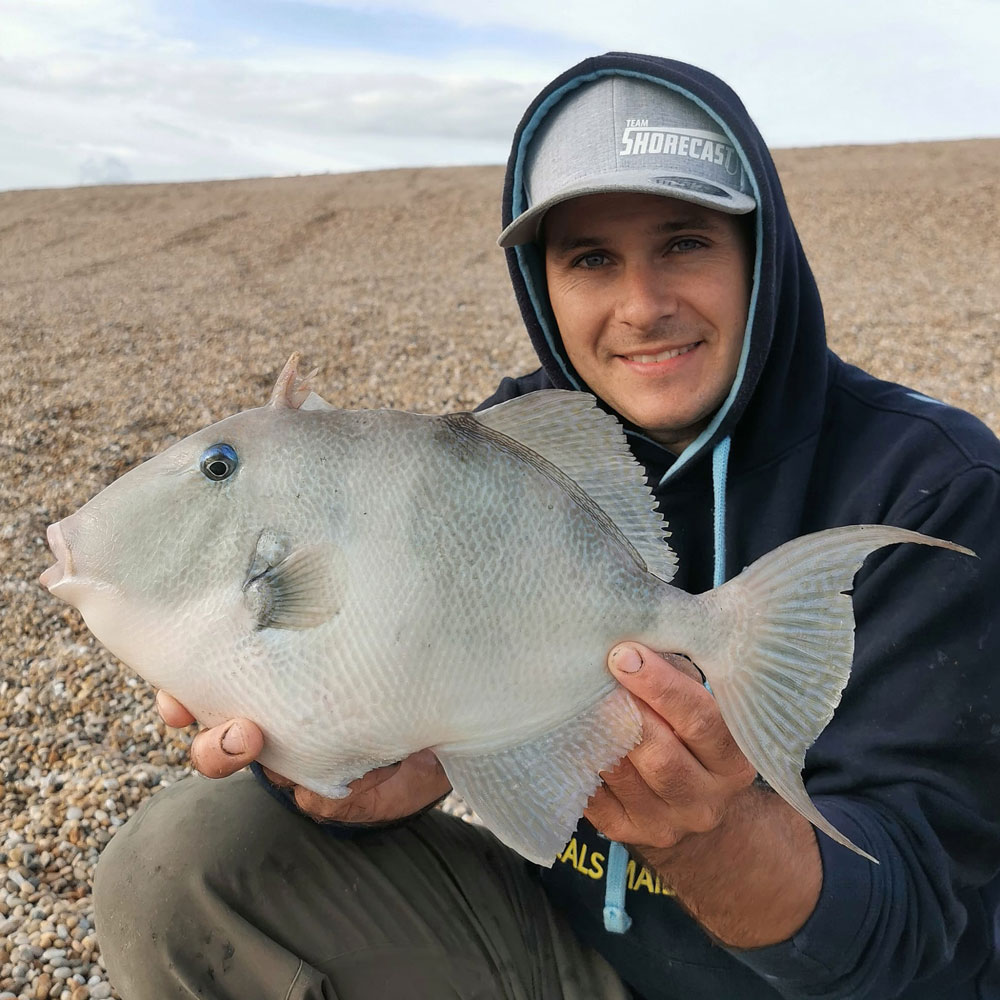
Float fishing is very successful as you’ll be covering more ground and features. It’s best to check out the specific depth you’re fishing in. Aim to have the bait up off the seabed 1ft to 3ft. The eyes of the trigger are set back and on top of the head, so they are looking in front of them and upwards, so baits need to be presented accordingly. If you’re not getting bites, change the depth of the bait, either shallower or deeper. You’ll also need to shallow the depth of the bait as the fish come in for the groundbait and come up in the water column towards the source.
As with ledger fishing, occasionally lift the rod tip to raise the bait and drop it back. This sudden movement is often enough to get a bite from an otherwise disinterested trigger fish.
It’s worth mentioning that triggers are shoal fish mostly, so the groundbait can pull in numerous fish. When you hook one, the fight will push the others away, but as soon as you’ve landed and released the fish, add more groundbait, and they’ll soon return. If you can, when you hook a fish, steer it away from the groundbait area to minimise disturbance.
